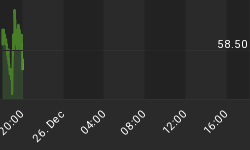
The slide in precious metal prices has done much to undermine investor confidence, yet the indications are that demand for the physical metals remains strong. This leads many observers to comment that paper gold and silver and not bullion are driving prices. The current sell off is a combination of long paper positions capitulating, new short positions being opened by trend-chasers, and importantly, bullion banks squaring their books.
A better way to differentiate between futures and forward markets and physical demand is to regard the former two as used by speculating investors and the latter by buyers seeking financial protection from systemic risk. In the middle there are those who buy futures to take delivery, but they are a minority. This divergence of motive explains why paper markets seem to be playing a different tune from the physical market.
While speculating investors are losing their nerve, they are ignoring three recent bits of information worth considering. In a radio interview given by former Assistant Treasury Secretary Paul Craig Roberts to Goldseek Radio over Easter he concludes that the Fed is suppressing the gold price so that markets do not lose confidence in the dollar and drive up interest rates. His reasoning is clear, logical, and importantly, well-informed. The Treasury Secretary, who was his immediate boss, has a duty of oversight of the Exchange Stabilisation Fund, which was set up in 1934 to "deal in gold and foreign exchange and such other instruments of credit and securities as he may deem necessary...." Roberts therefore knows what he is talking about.
The second bit of information was research into US imports and exports of gold, conducted by Eric Sprott and Shree Kargutkar which analysed US trade statistics since 1991 to conclude that at least 4,500 tonnes of gold over and above US gold production and recycling had been exported, and possibly as much as 11,200 tonnes when private sector demand in the US is included. This gold can only have come from official sources, which confirms deductive analysis over the years by our own James Turk and Frank Veneroso, that substantial amounts of gold have been supplied into the markets by Western governments and their central banks.
The third bit of information was my paper written for GoldMoney a month ago that concluded that the Bank of England's custody of monetary gold cannot be more than 3,320 tonnes, the balance of a minimum of 2,220 tonnes being non-monetary gold held mostly for governments and perhaps sovereign wealth funds. So contrary to appearances, at a maximum, only 60% of the gold in the Bank's custody is actually monetary gold.
Furthermore, when news such as the Cyprus banking debacle hits the headlines gold and silver get sold down aggressively. This contrary action is consistent with intervention designed to bolster confidence in paper money. The evidence that central banks and their agencies have been suppressing the price of gold is therefore overwhelming, and Paul Roberts' analysis confirms why this is happening. When Western central banks rig markets, punting against them is a mug's game. But for those that recognise that central banks have dug themselves into a hole from which there is no escape for the banking system, governments and ultimately paper currencies, there is an irrefutable logic in possessing physical gold and silver.
Instead of worrying about prices going down, we should count our lucky stars for the gifts of artificially cheap gold and silver, courtesy of our central banks.















